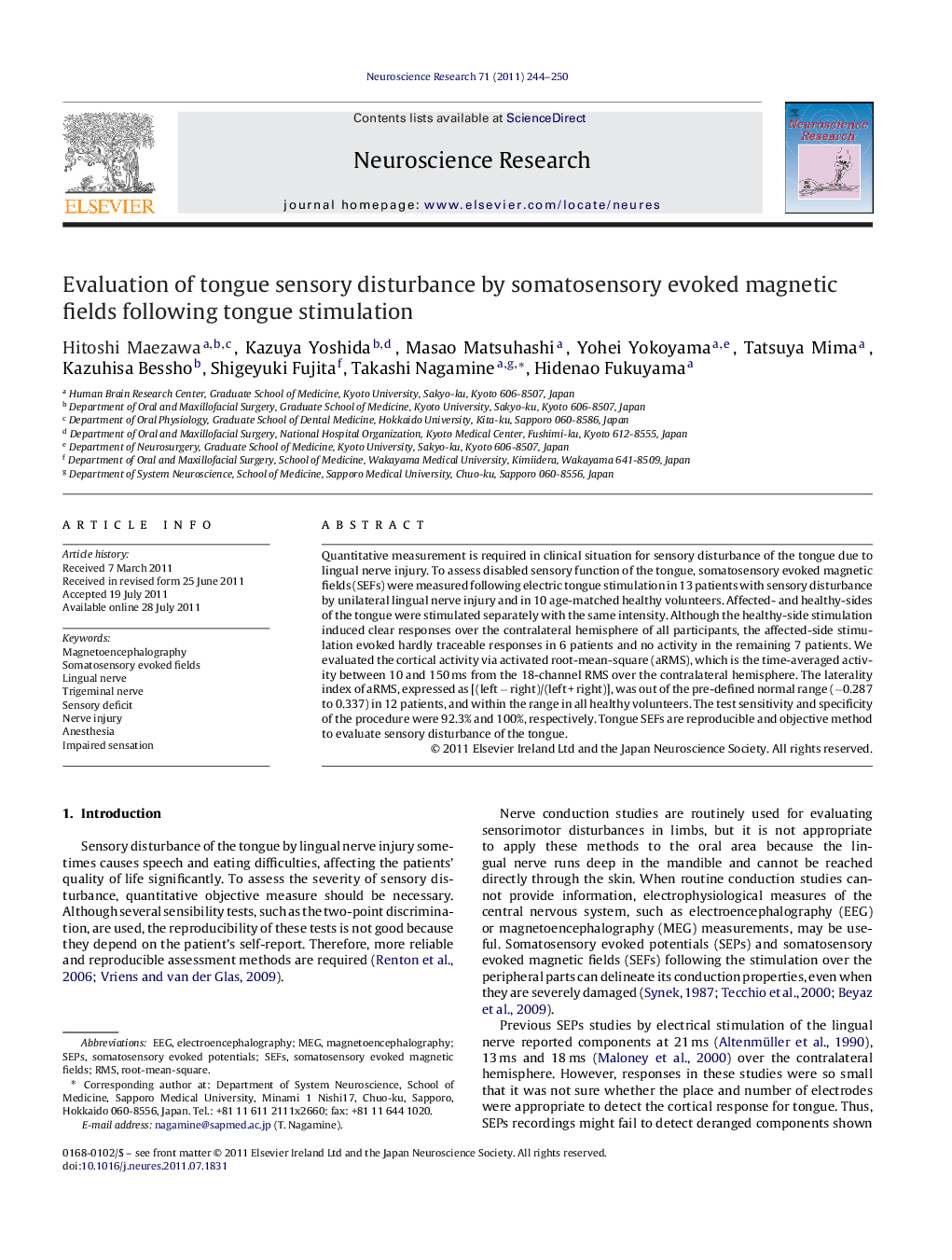| Article ID | Journal | Published Year | Pages | File Type |
|---|---|---|---|---|
| 4352119 | Neuroscience Research | 2011 | 7 Pages |
Quantitative measurement is required in clinical situation for sensory disturbance of the tongue due to lingual nerve injury. To assess disabled sensory function of the tongue, somatosensory evoked magnetic fields (SEFs) were measured following electric tongue stimulation in 13 patients with sensory disturbance by unilateral lingual nerve injury and in 10 age-matched healthy volunteers. Affected- and healthy-sides of the tongue were stimulated separately with the same intensity. Although the healthy-side stimulation induced clear responses over the contralateral hemisphere of all participants, the affected-side stimulation evoked hardly traceable responses in 6 patients and no activity in the remaining 7 patients. We evaluated the cortical activity via activated root-mean-square (aRMS), which is the time-averaged activity between 10 and 150 ms from the 18-channel RMS over the contralateral hemisphere. The laterality index of aRMS, expressed as [(left − right)/(left + right)], was out of the pre-defined normal range (−0.287 to 0.337) in 12 patients, and within the range in all healthy volunteers. The test sensitivity and specificity of the procedure were 92.3% and 100%, respectively. Tongue SEFs are reproducible and objective method to evaluate sensory disturbance of the tongue.
► We tried to establish objective measure to assess sensory disturbance of the tongue. ► Patients with unilateral sensory disturbance of the tongue were recruited. ► We evaluated the unilateral tongue-stimulated somatosensory evoked fields (SEFs). ► The affected side stimulation evoked smaller cortical responses. ► Pre-defined criterion via SEFs could distinguish patients from healthy subjects.
